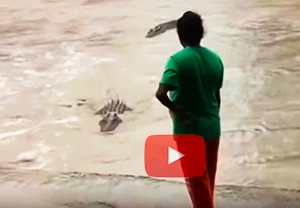Crocodile Attack How to Survive a Crocodile Attack
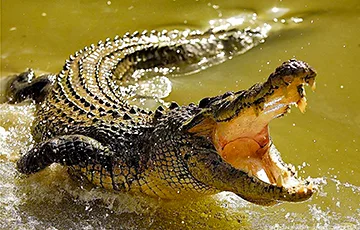
A saltwater crocodile is one of nature's deadliest and most efficient killing machines. These aggressive reptiles are amphibious, carnivorous, and can grow up to 6 meters long and weigh over 1,000 kilograms. Humans are just food and fair game for a large crocodile. Any person entering a crocodile-infested area, such as a river or creek, has a high probability of being attacked by a crocodile and suffering severe injuries or being torn apart and eaten.
Crocodiles as small as 1.7m have been known to attack humans, but most fatalities are caused by animals that are over 4m in length. A human is very unlike to survive a well-targeted assault from an adult crocodile larger than 4m. Most attacks occur on people in the water, such as swimmers, people in low to the waterline boats (such as canoes or dinghies), or bending down at the water’s edge. This low profile seems to elicit a greater predatory response than when a person standing upright. Attacks also occur close to the water’s edge on humans such as fishermen, hunters, and campers.
How Crocodiles Attack
It Really Happened!
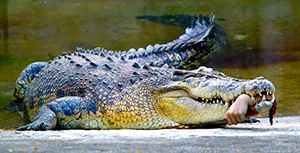
A vet at a Taiwan zoo had his arm chewed off by a crocodile. Luckily the arm was retrieved and sewn back on after 7 hours of surgery. The man now has one arm that is shorter than the other.
The crocodile is an ambush predator that uses stealth to approach its prey. Swimming with most of its body submerged, it silently positions itself within range of its prey and then uses its powerful tail and hind legs to leap out of the water and pouch on its prey. Grasping its victim with a bone-crushing bite, it will tear its victim apart and eat it. This is definitely not a pleasant way to die — ripped to pieces and eaten by a crocodile.
Five to ten crocodile attacks occur in Australia each year. 25% of these attacks result in fatalities, claiming the lives of 1-2 people annually. The majority of attacks, around 81%, occur when people are swimming, wading, or at the water's edge. Fatal attacks are typically carried out by crocodiles that are between 2.7-5.1 meters in size, with an average size of 4.3 meters. However, even smaller crocodiles as small as 1.7 meters have been known to attack humans. Males are more likely to be attacked, accounting for nearly 71% of all attacks, and the majority of attacks, around 74%, occur during the day. Additionally, the wet season (Nov-Apr) sees a higher incidence of attacks, with nearly 54% of all attacks taking place during this time.
Crocodile attacks can occur for a variety of reasons, including hunting for food, defending their territory, protecting their nest or young, and even mistaken identity. It's important to always be aware of your surroundings when in areas where crocodiles are known to live and to take necessary precautions to avoid any potential encounters.
How to Survive a Crocodile Attack
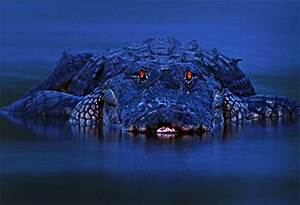
If attacked by a crocodile, the only defence you may have is to poke it in its eyes and hope it will let go.
How to Prevent Crocodile Attacks What to Do if a Crocodile Attacks You?
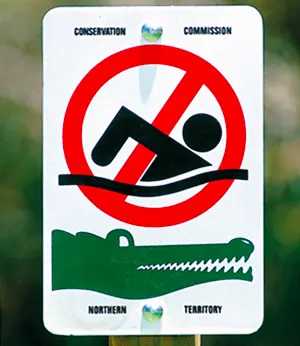
A few simple precautions can make a visit to areas known to be inhabited by crocodiles safe.
Obey all crocodile warning signs – they are there for a reason – to protect you.
Do not assume it is safe to swim if there is no warning sign. A crocodile may lurk in any shallow pool, drainage canal or even a ditch, especially if the water is murky.
Do not allow pets to roam near the water.
Supervise children at all times and explain the dangers.
Do not walk around at night, especially close to water.
When camping, choose a site well away from the water, preferably on high ground. If camping on a beach, be aware that crocodiles sometimes come ashore at night.
Stand back at least 3m from the water’s edge. If fishing, cut your line if it gets entangled rather than wade in.
Never leave animal carcasses, fish guts, raw meat, etc. near where people swim, fish or moor boats.
Do not dangle your arms, legs or body over the side of a boat. You may get it chewed off or get dragged into the water by a lurking crocodile.
Never present a low profile to a crocodile. Most attacks occur on swimmers, or on people canoeing, or bending down at the water’s edge. This low profile elicits a greater predatory response from a crocodile than from a person standing upright.
If you shine a flashlight and see glowing orange eyes, you know you are seeing a lurking crocodile.
All Rights Reserved. (Last Updated: Mar 18, 2024)
